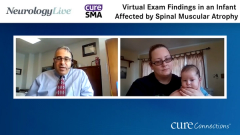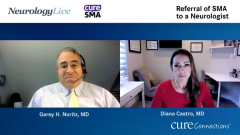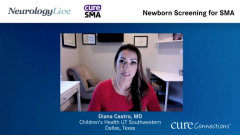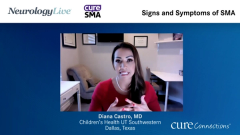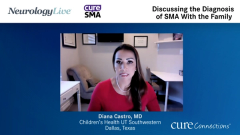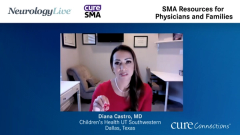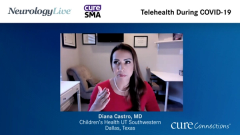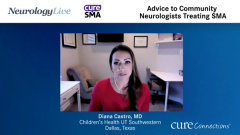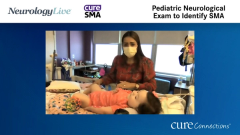
Newborn Screening for SMA
Diana Castro, M.D., discusses newborn screening for spinal muscular atrophy (SMA) and suggests how to care for patients after the results are received.
Episodes in this series

Garey H. Noritz, MD: Dr Castro, you mentioned that in Texas you don’t yet have newborn screening. In states where there is newborn screening, how good is that test? If you suspect a child has SMA [spinal muscular atrophy] but their newborn screen was normal, can you be sure they don’t have SMA?
Diana Castro, MD: That is a great question, and I think this is one of the key points for people to remember. The newborn screening will capture 95% of the patients. In 95% of the cases with spinal muscular atrophy, there is a homozygous deletion of the SMN1 gene. The screening is solely looking for deletions, but there is a small percentage of patients—about 5%ؙ—that may have a mutation that is only going to be seen in sequencing the gene. I have cases where the patient has the deletion in one allele and a mutation in the other allele, or they may have mutations in both alleles. Those patients are not going to be captured by the newborn screening. As neurologists, if you still have that concern, you can send the testing right away. The test will check for SMN1 deletion and sequencing, and it also will give you the SMN2 copy number. Something that has happened to me recently is that I have to specifically ask, “Are you sequencing the gene? Are you giving me the SMN2 copy number?” Make sure this is always included.
Something I don’t think I mentioned was the carrier testing. Right now, more OB-GYNs [obstetricians and gynecologists] are testing mothers before they get pregnant or during the early stage in pregnancy. If they come up positive, they will test the father as well. In those cases, amniocentesis can be performed, but many families decide not to do it because of the risk of losing the pregnancy. The testing can be done right away, the day the baby is born. What we do in those cases is prenatal counseling, and we give the test kit to the mother to take to the hospital when she will deliver the baby. The testing can be done the same day. We have so many opportunities to get this diagnosis that we have to be informed of what’s going on. Many neurologists don’t know how many options we have for treatment, and I think it’s important to stay up to date on all the knowledge.
Garey H. Noritz, MD: Thank you for watching this NeurologyLive® Cure Connections® program. If you enjoyed the content, please subscribe to our e-newsletters to receive upcoming programs and other great content right in your inbox.
Transcript Edited for Clarity
Newsletter
Keep your finger on the pulse of neurology—subscribe to NeurologyLive for expert interviews, new data, and breakthrough treatment updates.

